THE FOLLOWING HAS BEEN MODIFIED SINCE THIS WAS FIRST POSTED BACK IN JANUARY.
PICTURES HAVE BEEN ADDED, ETC.
First, I pound and separate the DRY sinew into strands.
It doesn't matter too much if you pull apart the sinew from the middle or the ends, especially if the pieces are on the short side.
The strands are about 1/16 of an inch wide (or less) with no hard spots. I do not "comb" the sinew.
(This is how much sinew I used for the string...plus a little more: I like to finish off with longer strands)

I try to get the strands as consistent as possible. This makes it easier to splice in the correct amount.

Once I have a good pile, I sit down with my dry sinew and a sharp knife and cutting board.

I trim any bulky ends (of the stands) off with the knife.


I grab some strands, dip my fingers in the water and moisten them a bit.
I twist the strands HARD and add strands based on experience and the desired strength of the string.
If you do this when the strands are soaking wet, you can't get a good grip and you'll end up with a loose twist and a lumpy string.
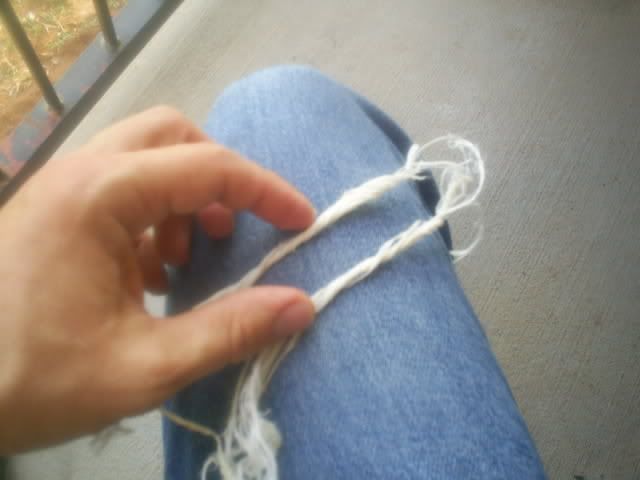
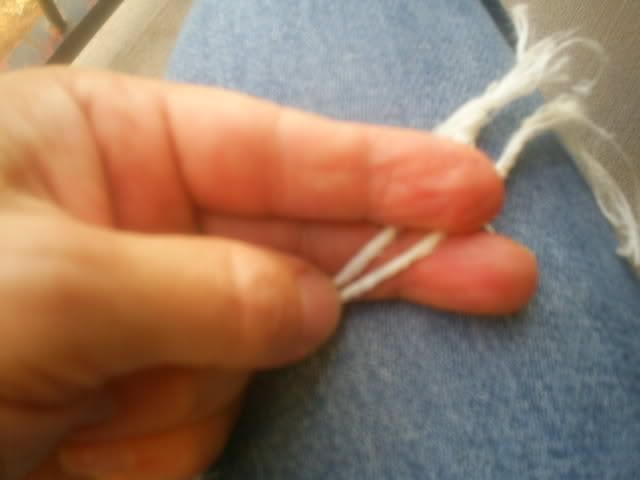
The harder the twisting force, the more accurate I can be with the string diameter.
As I'm reverse wrapping the string, I try to remember that at this initial stage, thicker is better.
I've started may times with too narrow a string and had to start over (no fun).

From my experience, I find that a two-ply string is easiest and fastest...although a three-ply looks better.
Here is a video of someone using the same technique that I use for twisting the strands together.
The difference, of course, is that I add splices....and I can't make the string nearly as fast.
(It takes me 1 to 2 hours to make the string, depending on the strength of the string)
http://www.youtube.com/watch?v=9o2qhN1qCdgAs I add strands, I moisten my fingers in the bowl of water and apply water sparingly to the sinew.
(It was drizzly and humid today.....so I didn't need to dip my fingers in the water)







The loop is the most difficult part of the string.
Here I've added quite a few splices to maintain the thickness of the string at the base of the loop.
Sometimes I cut away strands so that this area isn't so thick, but it's easier to just add lots of splices and then taper the thickness down slowly.

Here is the string laid down next to a completed bow (for size reference).

I tie off the end with an overhand knot and admire my new "shaggy" bowstring...
I DO NOT TRIM OFF THE LOOSE ENDS AT THIS POINT.


I roll up the string, dip it briefly in the bowl of water, and then remove the excess water.

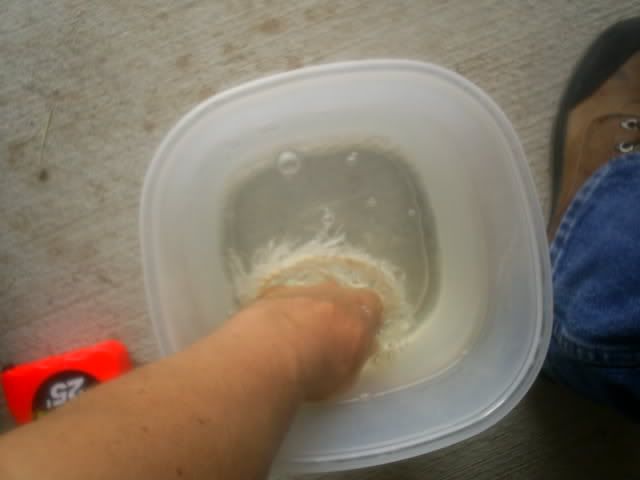


I place the string inside a towel and apply pressure with my foot

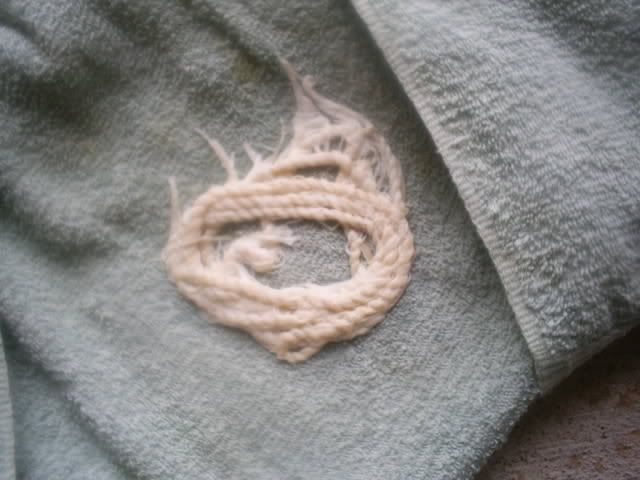
I then place the loop over something high,

twist the string down the whole length,

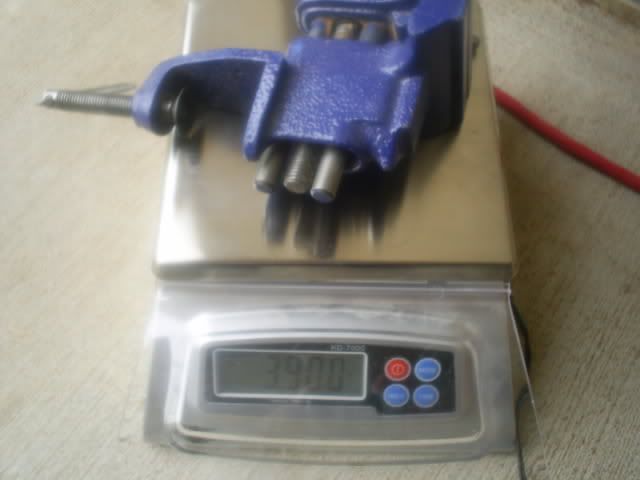
and clamp a weight to the end of the string (about 4lbs in this case).
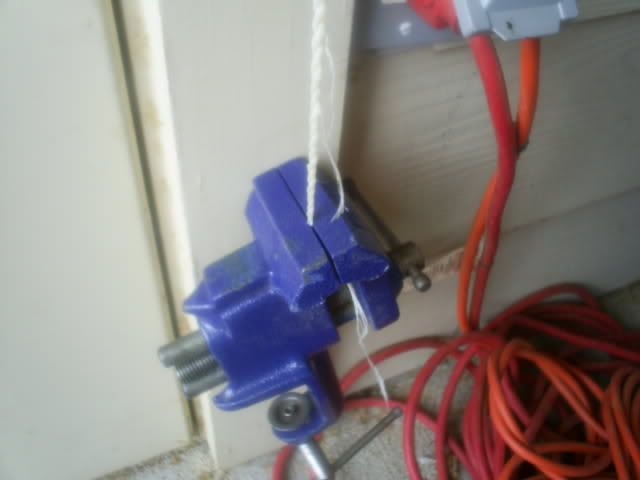
The string's original length was 58" before the twisting.

And about 57" after the twisting and clamping the weight to the bottom.

I then pull the loose ends of the strands away from the string so that it will dry faster.
I DO NOT TRIM THE LOOSE ENDS AT THIS POINT.
If the loose ends are trimmed off, the string might unravel as it stretches and dries.

The string is a little over 3/16" wide now....

The string after a couple hours of drying...it's about 1/8" in diameter,

and about 61" long (it stretched about 7%)

Once dry (overnight), I take down the string and clip off the loose ends with fingernail clippers.
Some of the strands may be stuck to the string: so I just rub the string until they pop up.
I use a lighter or candle to CAREFULLY burn off any remaining "hair" (Note: I don't burn off the "hairs" anymore).
Here's the completed string.


About 3/16" just below the loop.


About 1/8" wide. This will work for bows up to 60# draw weight with no problem.

That's it. Now I test it. I recommend shooting a new string on a sunny day (for starters) and at half draw. After a few shots, I gradually increase the draw until I've reached full draw and shot the bow about 50 times. This process is what I call "stressing" the string. After the string has been stressed, moisture will not affect it so much and shooting on humid days is not a problem. However, if you accidentally get water on the string, unstring the bow immediately and LET IT DRY COMPLETELY before shooting again.
The string can be oiled (to make it softer) or it can dipped in hide glue (to make it stiffer) but I don't recommend either of these things. You could probably add a coat of beeswax to the string, but I'm not sure that this will make it waterproof....and it will certainly add weight to the string. I've never used beeswax or any other coating on my strings.
Sinew strings wear out more quickly that any other artificial strings I've used (nylon, Dacron, polyester) but there is a special feel in these strings. They are easier to grip with your fingers, they become soft in the area where you nock the arrow, and they are very light in weight.